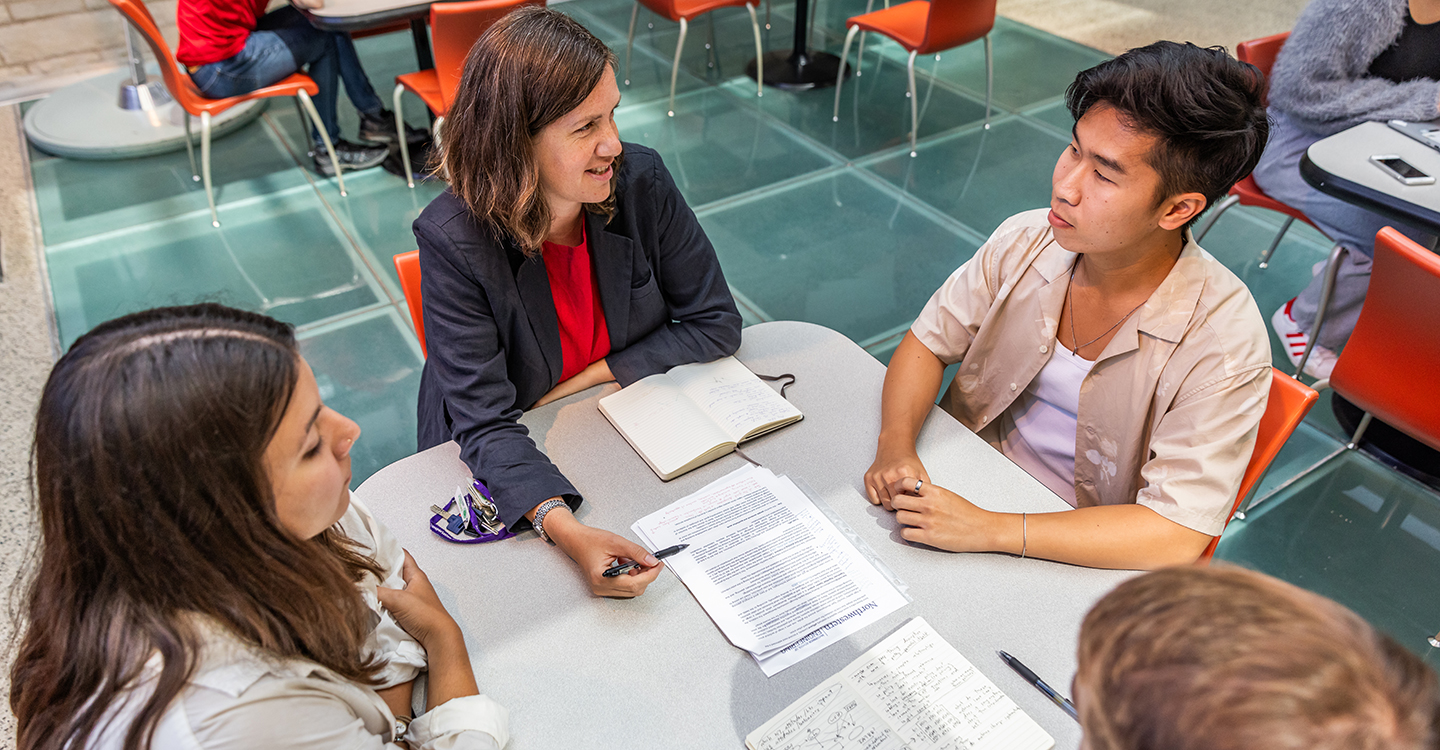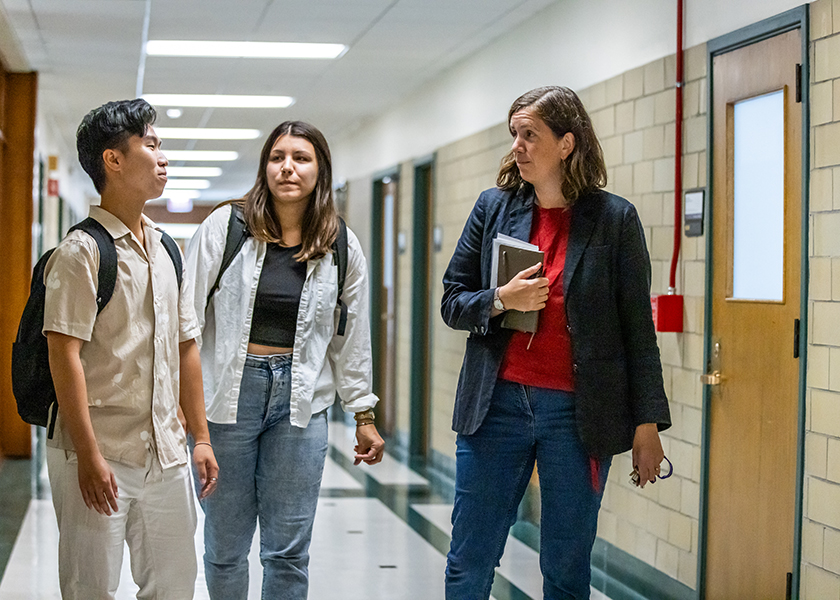Deep Thinking about Transportation Systems
Amanda Stathopoulos studies how humans’ transportation behaviors influence decision-making and innovation

At first glance, Amanda Stathopoulos seems a pinch out of place at Northwestern Engineering.
After all, Stathopoulos is a trained economist intrigued by human behavior. On its surface, her work appears more psychological or even sociological, touching areas like communication and public policy.
Dig deeper, though, and Stathopoulos’s work has a fitting home in the Department of Civil and Environmental Engineering, which champions a “systems thinking” approach to tackle complex problems.
In Stathopoulos’s case, the complex problem is how humans move through the world.
Stathopoulos, William Patterson Junior Professor and associate professor of civil and environmental engineering, investigates transportation systems, eager to understand how people make transportation decisions as well as how innovation in the field impacts society, including its effect on quality of life, prosperity, and equity.
“There are complex behaviors in transportation systems and I’m interested in translating muddy, intricate data into insights to understand the choices we observe and how it can inform decision making and innovation,” said Stathopoulos, a Northwestern Engineering faculty member since 2014.

With rampant innovation in the transportation sector, from ride-sharing enterprises to autonomous vehicles, combined with a plethora of stakeholders – users, providers, and policymakers among them – and rich data streams emerging from transit fare cards, transaction data, cell phone traces, and the like, Stathopoulos calls transportation a fascinating area to examine human decision making.
“We have emerging concepts and services being tested in real time, which allows us to understand rapidly and in a transformative way what is happening with innovation,” Stathopoulos said.
Blending “math and psychological realism to understand behavior,” Stathopoulos uses quantitative and qualitative data streams to generate a holistic understanding of transportation-related behaviors.
In a study exploring community resilience, specifically human behavior during emergencies, for example, Stathopoulos ran a hypothetical choice experiment with an online sample. She provided a real-life scenario of a dam breaking in Michigan, which sparked evacuation orders. After posing questions about evacuation and collecting answers, Stathopoulos then performed advanced choice modeling to determine who’s likely to leave or stay behind and how people made decisions based on messaging or their peer group’s behavior.
Stathopoulos said the work can inform disaster management and help local leaders improve messaging strategies in such scenarios, including how – and by whom – information is delivered.
In another effort, Stathopoulos investigated how socioeconomical disadvantages influence diffusion of on-demand ride-sharing services. Leveraging millions of records from ride-sharing operators coupled with demographics and transit access datasets, Stathopoulos found the highest level of demand for ride sharing existed in areas already boasting established transportation.
My hope is that the behavioral models we put forward have a positive impact on society and address what residents really need from transportation systems.
“Ride sharing was not a gap filler, but rather a substitute increasing rider privilege,” she said, thereby busting the myth that ride-sharing services bolstered transportation equity.
In that same work, Stathopoulos also analyzed ride pooling, which conventional wisdom holds would have more traction in lower-income areas due to its reduced costs. However, the frequency of ride pooling in low-income communities struggled to reach critical mass and, therefore, floundered.
“If there’s little demand, it’s hard to justify the service,” Stathopoulos said, reminding that transportation innovation can lead to “nuanced realities” where diffusion of pooling can uniquely benefit underserved communities while simultaneously failing to reach a critical demand threshold.
Stathopoulos’s other projects include working with the Regional Transportation Authority to develop strategies for transit recovery in the post-pandemic world as well as an interdisciplinary collaboration with Northwestern colleagues from computer engineering and the Feinberg School of Medicine on the National Science Foundation-sponsored Smart Connected Communities project examining access to healthcare.
Ultimately, she hopes her work helps policymakers, agencies, and firms make more relevant, people-centric decisions.
“My hope is that the behavioral models we put forward have a positive impact on society and address what residents really need from transportation systems,” Stathopoulos said.